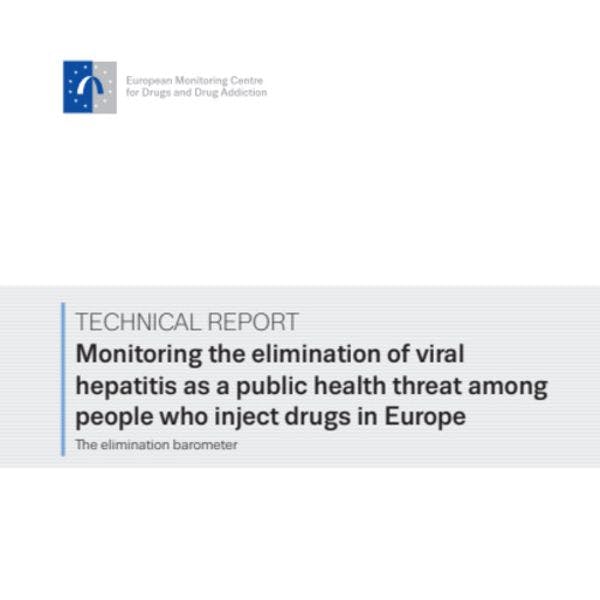Seguimiento de la eliminación de la hepatitis vírica como amenaza para la salud pública entre las personas que se inyectan drogas en Europa
El Observatorio Europeo de las Drogas y las Toxicomanías (OEDT) examina los datos internacionales relativos a los virus de la hepatitis B y C para determinar cómo impulsar su eliminación. Más información, en inglés, está disponible abajo.
In 2016, the World Health Assembly endorsed the first global health sector strategy on viral hepatitis. The aim of the strategy is to eliminate viral hepatitis as a major public health threat by 2030. In Europe, people who inject drugs (PWID) are at high risk of hepatitis C virus (HCV) and hepatitis B virus (HBV) transmission and constitute a key group for the elimination strategy. Chronic viral hepatitis can result in serious liver diseases such as cirrhosis and cancer and is associated with a high burden of disease. As a complement to the existing monitoring platform, the European Monitoring Centre for Drugs and Drug Addiction (EMCDDA) is working with its expert network on drug-related infectious diseases (the DRID network) on a PWID-specific list of epidemiological indicators — the elimination barometer — in order to help EU Member States to identify data gaps and assess progress towards the elimination of HCV and HBV in this group.
The elimination barometer includes five building blocks (context and needs, inputs, prevention, testing and linkage to care, and impact) and 17 indicators covering the EU, Norway and Turkey until the last quarter of 2018. The sources of the data include the EMCDDA data collection tools that collate data from the EMCDDA national focal points (Fonte for quantitative data and the Reitox workbooks for qualitative information), information shared by the national DRID experts and published reports. The 2020 targets were taken from the World Health Organization’s regional action plan for viral hepatitis in the European region.
In the 15 national studies conducted between 2015 and 2018, the estimated prevalence of injecting drug use at national level ranged from less than 1 per 1 000 to more than 5 per 1 000. Sharing of injecting equipment is frequently reported by drug users. In 8 out of the 14 countries with national data on HCV antibody prevalence for 2016-17, more than half of people who inject drugs have been infected with HCV. Among the four countries collecting data on the prevalence of chronic infections among PWID, the prevalence ranged from 23.1 % in Germany (local study) to 55.6 % in Austria. In the five countries with national data on HBV prevalence in 2016-17, between 1.4 % and 9.4 % of injecting drug users were estimated to be currently infected. By the end of 2018, 18 countries had a national hepatitis policy in place. In 2017, 4 and 11 countries were on target, respectively, for sterile needle/syringe distribution and opioid substitution treatment coverage. In 2018, hepatitis B vaccination was routinely offered to prisoners in 13 countries. While at least some harm reduction services offered HCV testing to drug users in 22 EU Member States, in only four did more than 50 % of drug treatment entrants report having been tested for HCV in the last 12 months in 2017. In 2018, clinical guidelines restricted access to HCV treatment for people who inject drugs in eight EU Member States. Data on the prevalence of HCV among young and new injectors suggest that transmission remained at high levels in 2017.
While the available data show that the burden of HCV and HBV among PWID is high, there are still information gaps in many countries, including a lack of core data on denominators (the size of the PWID population) and routine prevalence estimates for chronic HCV infections among PWID. The coverage of measures known to prevent HCV and HBV infections among this group is suboptimal in many Member States. There is currently no systematic collection of data on the HCV and HBV cascade of care for PWID in Europe. The coverage of testing in the last year among PWID reflects missed opportunities to diagnose people in drug treatment services and prisons, while financial and clinical restrictions still constitute barriers to direct-acting antiviral treatment. Scaling up of equitable and tailored prevention measures, testing and treatment for PWID is needed to have an impact and to reach the elimination targets.
